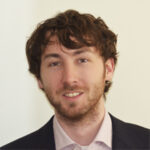 Sadly, clinical trial studies are often stalled before they begin.
Sadly, clinical trial studies are often stalled before they begin.
One of the fundamental challenges faced by hospitals, medical practices and healthcare research organizations that are engaged in clinical trials is the recruitment and retention of volunteer participants.
 Sadly, clinical trial studies are often stalled before they begin.
Sadly, clinical trial studies are often stalled before they begin.
One of the fundamental challenges faced by hospitals, medical practices and healthcare research organizations that are engaged in clinical trials is the recruitment and retention of volunteer participants.
In the study of the safety and efficacy of new medical drugs and devices, the solutions to these challenges are not rooted in the advancement of science, but in effectively applying cost-effective marketing strategies.
Nationwide, it’s a two-sided problem. On one hand, recruitment rates have been sliding downhill in recent years. As many as one in five trials (15-20 percent) are unable to enroll a single patient, and thus never begin, according a recent write-up in pharmaceutical-technology.com. Other data suggest the “failure to start” rate is even higher.
For trials that at least get off the ground, patient retention becomes a continuing concern, with an average dropout rate of about 25 percent leaving the program.
As a further consideration, clinical trial marketing differs from hospital service line or other healthcare promotional efforts in several respects. These include compliance with certain regulations and approval of materials by the Institutional Review Board (IRB).
These marketing distinctions and IRB ethics review, however, are not the barriers to participation. Essentially, rules and regulations act as public safeguards, and help assure that marketing messages are accurate and not coercive.
Clinical trial marketing—to reach prospective patients, referring doctors and the public—does face significant barriers. Examples of some (but not all) of the key communications challenges include:
EXTERNAL: Lack of awareness, misconceptions and negative perceptions. Many patients are unaware of clinical trials as an option in their care, while others in the public don’t understand the concept. Still others hold negative perceptions about clinical trials. Some people wonder if they will be receiving a placebo with no health benefit. Other people are unsure if they’re truly ready to be in a trial. Still others worry about possible side effects.
Negative perceptions make reaching and recruiting patients one of the biggest bottlenecks and costliest functions of clinical research. One of the tasks of external marketing is to communicate directly to prospective participants and provide reassuring and responsive information.
A number of variables will dictate how a well-consider marketing plan is structured for external audience awareness. But elements to be used typically include news releases, print ads in local media, posters, community health fairs, and broadcast advertising. Internet advertising, social media activities, and (possibly) a trial-specific website may be appropriate.
INTERNAL: Overreliance on referring doctors for candidates. Research sponsors have increasingly relied on doctors to recruit patients within their own patient bases, and also to solicit referrals from professional colleagues. For a variety of reasons potential referral sources are unaware of trials, don’t have time to learn about study details, candidate criteria or discuss with patients, or avoiding trials as inappropriate for their patients.
Communicating with an internal audience—particularly those professional colleagues who can identify potential candidates and make referrals—is likely to be more targeted and easier to reach with informative and educational marketing messages. Professional colleagues (doctor to doctor) are the most frequent, and often most trusted, sources of information.
Again, depending on the circumstances, marketing objectives and plan, communications tools that reach this audience may include email to specific doctors in your database, direct mail, news articles in internal publications, doctor-direct presentations and physician liaison work.
7 Clinical Trial Marketing Tips for Greater Success
How each of the following tips is applied can vary depending on the particulars of the study, demographic and geographic considerations, and dozens of other variables.
Spend time on the plan before spending dollars. Mindful of the regulatory considerations, a comprehensive marketing plan—with defined goals, strategies, tactics and budget—preserves time, effort and lean resources.
Internal first (usually). Referring physicians and professional colleagues are often easier to reach and more receptive to clinical information. This audience—where costs are lower and potential is higher—should be a top priority.
Professional help avoids overspending on media placement. There’s both an art and a science to the nuances of planning, buying and negotiating for radio, television, print and online media. It’s easy for the unsophisticated buyer to overspend—and under perform—with media budget. This is one area where outside professional services pay for themselves.
The Internet is healthcare’s new “front door.” Some estimates have it that most individuals (80 percent or higher) look online first for medical and healthcare information. A program-specific website, with proper Search Engine Optimization (SEO) provides a foundation for establishing and managing an online presence. Outreach—via Pay-Per-Click Advertising, blogs, retargeting and the like—can be designed to reach demographic groups or condition-specific audiences.
Rethink the benefits of Social Media. Many audience sectors are actively involved with the use of social media (SM) platforms such as Facebook, Twitter and others. But some reports suggest that social media is underutilized when it comes to clinical trial marketing. In addition to the obvious advantage of reaching and informing SM users, the proper messaging can foster patient engagement and commitment—both prior to and during trial programs.
Patient Experience and engagement foster retention. A primary factor in successful retention is to involve patients as partners in the study. This requires a proactive and deliberate system that builds patient rapport, engages and involves participants as individuals and as members of a community at every point of contact. This may also require organizational staff training as well as frequent between-visit communications, active social media use, email interaction, informative newsletters, a Q&A channel and other system tools keep patients interested, connected and involved.
Leverage mobile power. Mobile phones are ubiquitous and smartphone are clearly mainstream. Smartphones are essentially a computer in the patient’s pocket, with the advantages of being direct, immediate and personal. Smartphones, tablets and condition-specific apps can benefit clinical trial recruitment, participation/retention and engagement. “Smartphones are the ultimate cost-effective way to make clinical research more efficient. They are a non-intrusive tool for monitoring patients, and can be used to survey patients anywhere and at any time,” reports medGadget.
A comprehensive marketing plan is a vital first step to effective clinic trial communications and overcoming the significant barriers to success.








